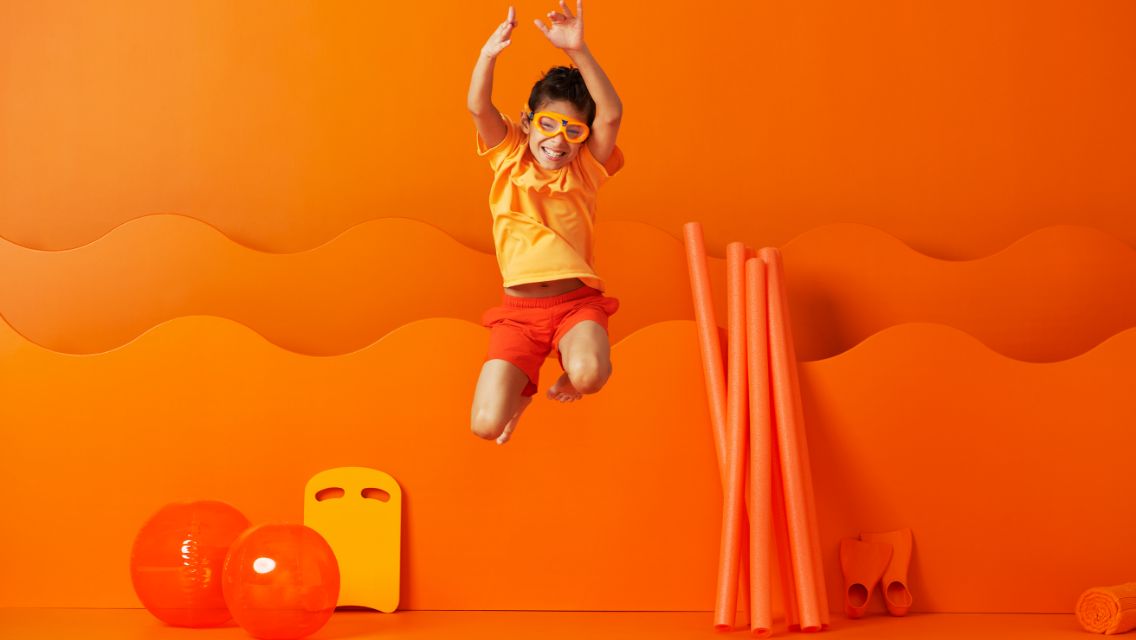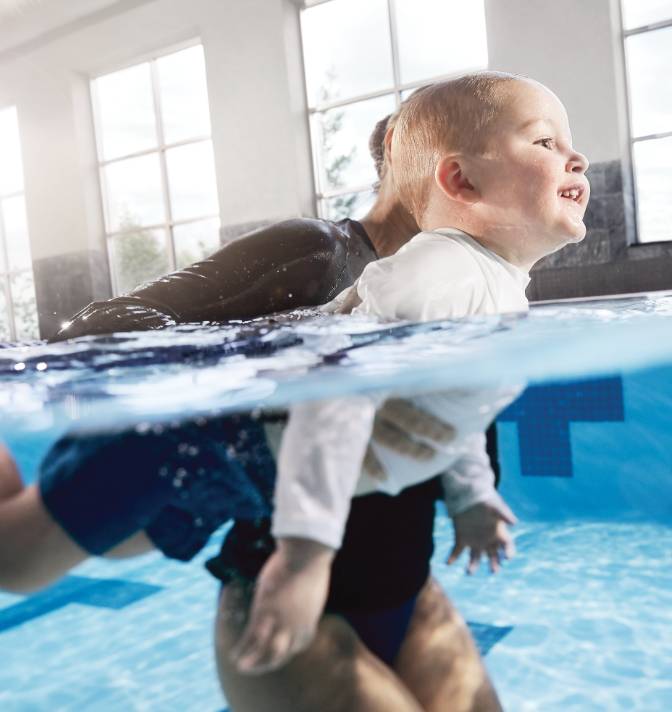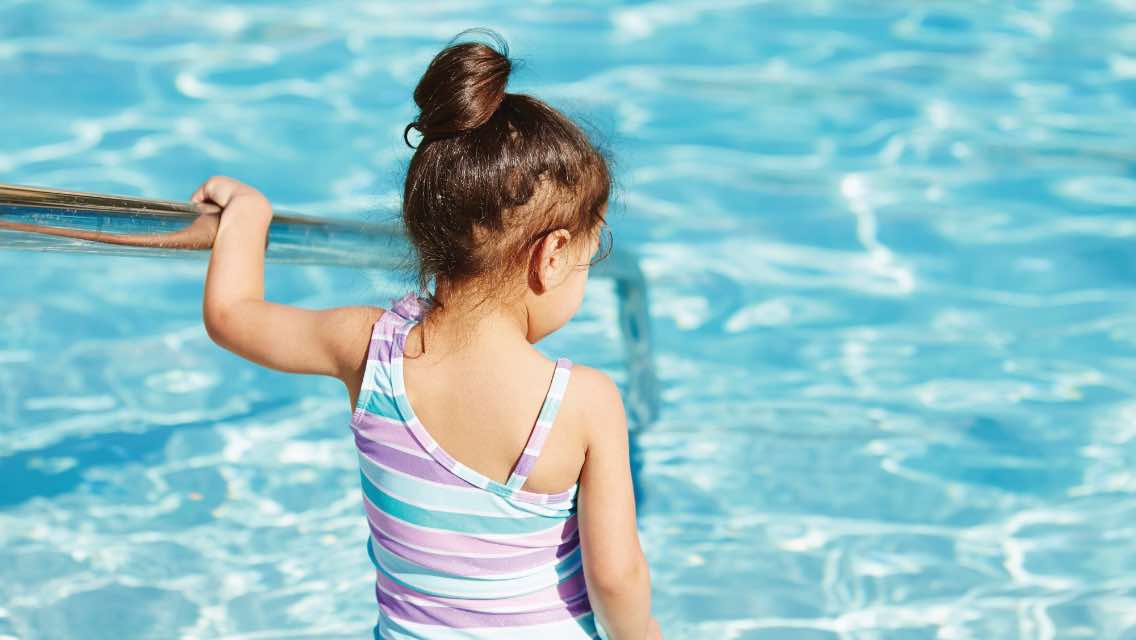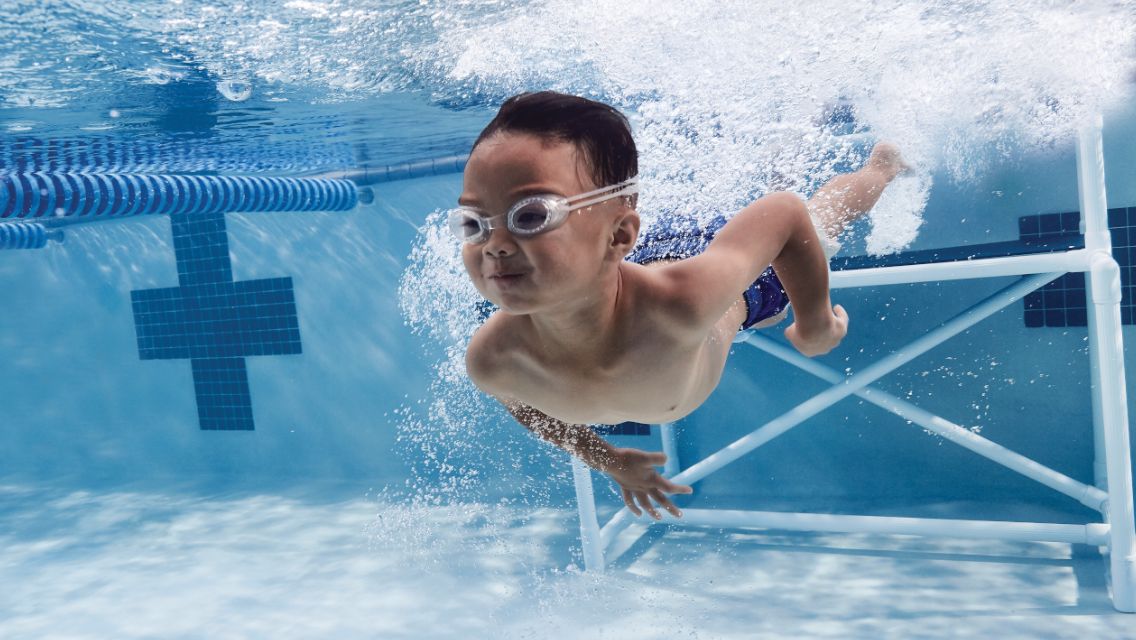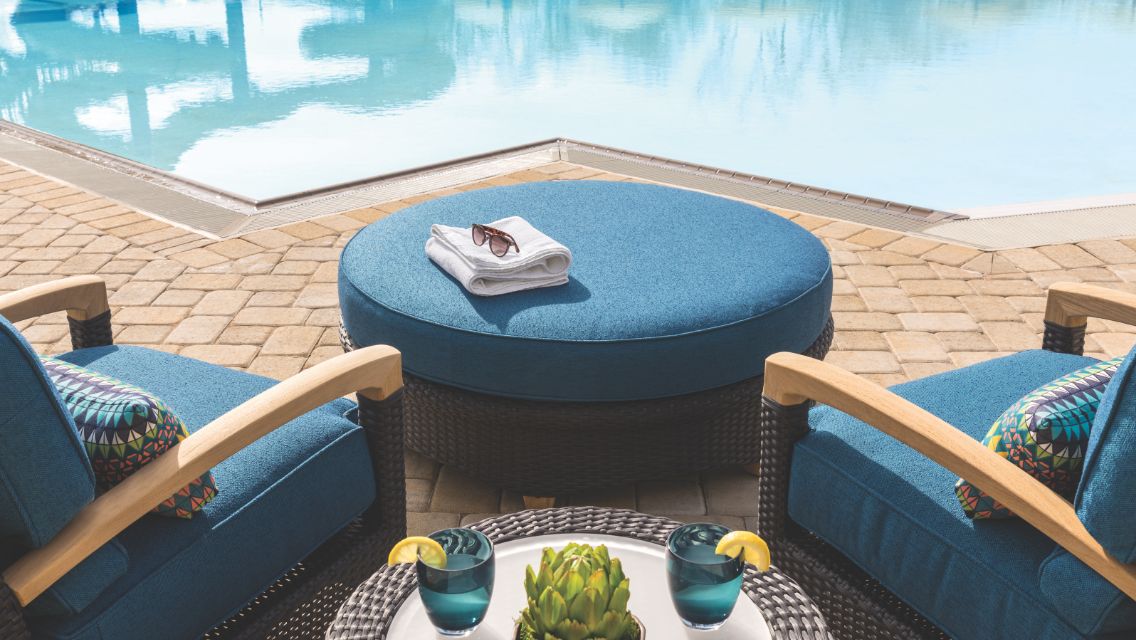Safety and preparedness are an important part of any activity — and particularly when water is involved. For kids, learning how to stay safe in and around water is crucial. Before you and your family are ready to splash, there are a few steps to check off first.
Protect your kids and help them become more comfortable in the pool with this handy list of gear from Jen Rezac, director of kids and aquatics education for Life Time.
1. Properly fitting, bright-colored swimsuit
Swimsuits easily stretch out over time — even just over the course of the summer. And because kids tend to grow like weeds, trying to fit them into hand-me-downs can be tempting. Make sure your child’s suit isn’t baggy anywhere on their body. You want it to be tight enough not to wrinkle, but not so tight that it restricts their range of motion or causes discomfort.
“The right swimsuit makes all the difference for kids in the water,” says Rezac. “It ought to feel like a layer of skin — you barely notice it’s there. If it’s a struggle to put it on when it’s dry, it’s not meant to be.”
And when it comes to swimsuit color, the brighter the better. Neon colors are great for identifying your child easily, especially if there are a lot of people in the pool. Try to avoid white, light blue, or dark colors like navy or black that aren’t as easy to spot.
“I personally always put my child in a bright orange suit when we go swimming so I can easily identify him even during swim lessons,” Rezac adds.
2. Coast-Guard-approved life jacket
There are many options available for life jackets, but Rezac urges you to choose one that is Coast-Guard-approved and fits the weight limit for your child. Check the tag to find this information. When putting it on, be sure to buckle all the straps and pull up at the shoulders. Well-fitted jackets won’t ride higher than your child’s ears.
3. Coast-Guard-approved floating devices
“If your child uses floating devices, they also need to be Coast-Guard-approved,” says Rezac. “If you have to fill it with air, there is a greater chance for danger as deflating is possible.”
She adds, “Avoid any swimsuits that have ‘built in flotation’ — even if it’s sewn in. These don’t help kids learn to swim and they are not life jackets.”
4. Swim goggles
“The specific goggles you choose make a world of difference. Avoid goggles that cover the nose (like a snorkel) or ones that have just one thin strap in the back,” Rezac advises. “Always make sure they have a thick liner of silicone to cushion the skin around the eyes and create a waterproof seal.”
Rezac offers a few tips to check if your child has put on their goggles correctly:
- Look at the logo to ensure it’s not upside-down.
- To find the right tightness, have your child hold the goggles against their eyes, then adjust the strap. If your child takes the goggles off and has a ring around the skin of their eyes, it’s a sign they are too tight.
5. Hair tie or swim cap
“If your child has long hair that can get in their face while swimming, tie it back into a ponytail or bun. You can also have them wear a swim cap, but this can be a bit of a struggle with younger swimmers,” says Rezac.
